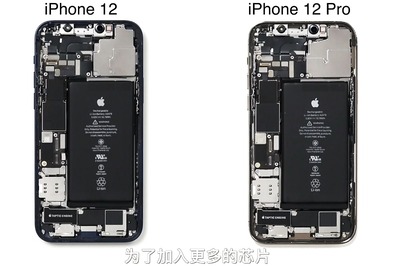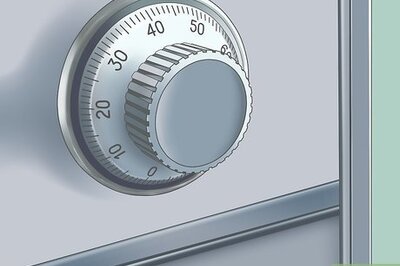
views
We cannot stress enough on the fact that air purifiers are now quite essential in homes and indoor spaces in most Indian cities. The outdoor polluting air which streams indoors, coupled with the often-ignored indoor pollutants such as cooking fumes, dust, pet dander as well as allergens including residues, fungal spores, indoor smoke, paint fumes and varnishes, all combine into what becomes extremely dangerous air to breathe in the time you are at home. This can be solved by having an air purifier in your room, allowing the lungs to heal themselves to a certain extent, from the damaging poor-quality air you are forced to breathe outdoors. This becomes even more relevant if there are children, elders or anyone with respiratory distress, at home. But not all air purifiers are equal.
British technology company Dyson arrived in India earlier this year and has already refreshed its air purifier line-up once. The Pure Cool Link which the company arrived in the Indian market with, has been replaced by the newer Pure Cool purifier range—and there are improvements across the board. The desk version is priced at Rs37,900 while the tower version costs Rs44,900. The thing is, and there is no easy way of putting this, Dyson air purifiers are generally considered to sport fairly premium price tags. So how, as a potential buyer, can you justify spending a premium on these, rather than just about any other purifier that costs lesser? The answer lies in what is inside. You probably need to take a step back and admire the fine attention to detail, before you splash the cash.
Hiding in plain sight?
The Dyson Pure Cool purifiers have a rather unique design. The larger one looks something akin to a futuristic tower fan. This is called the Dyson Pure Cool Advanced Technology Tower and is meant to be placed on the floor. There is a smaller version of this too, which is the Dyson Pure Cool Advanced Technology Desk, and as the name suggests is meant to be kept on a desk or a table or a sideboard. You will notice that there is a grill that extends upwards from near the base, and that is where the heart of soul of the air purifier sits—the filters. The design of the Pure Cool purifiers means this can take in air from all 360-degree angles. Above this is what is called the annular loop, which is essentially where the clean air vents are embedded. A guest arrives at your home, takes one look at it, and will probably think this is a cooling fan.
But what’s the advantage?
The biggest advantage of such a design is the oscillation mode, which allows you to set this oscillate as much as 350-degrees. The benefit is that clean air is spread across the room much quicker than almost any other air purifier can manage, with the traditional singular air vents at the top or on the sides. The closest another purifier has come to the oscillation mode is the LG Puricare, which has the fan which can rotate to a certain extent for the same desired effect. This is a purifier, and a fan—which can be great in the summer months.
But you may say, this direct blast of air might become uncomfortable in the cold winters, particularly in north India? The Pure Cool purifiers have what is known as a diffused mode. Basically, there is an additional air vent channel running down the middle of the outer surface of this loop, which still spreads the air around as quickly, but you just won’t feel that draft of cool air when you don’t need it. While most purifiers can kick up the fan speed to level 3 or 5 as the maximum, the Pure Cool has a maximum fan speed of 10. Yes, ten.
This is completely different from anything else available in the market. Yes, LG has the unique double-decker Puricool, Blueair has the industrial yet effective Classic series and Honeywell has the fall-resistant design for most of its purifiers, but there is quite nothing that has the visual appeal and the dual purpose of the Pure Cool.
Detecting the air
All indoor air purifiers have air quality sensors integrated within them. This is to enable realtime monitoring of the indoor air quality and change the operation mode accordingly if need be. The Dyson Pure Cool purifiers have laser sensors that collect data for PM 2.5, PM 10, VOCs and NO2—and you can see these on the purifier's own display as well as the Dyson Link app (free for Android and iOS). For instance, the Blueair Classic 280i collects data for PM2.5 and VOCs, but purifiers that can monitor and collect so much data about the indoor air are rare. When we tested the sensitivity, a simple spray of deodorant in the far corner of the same room, got the Pure Cool’s fan speed to instantaneously increase a notch.
Smartness is priceless
A lot of air purifier companies have accompanying apps for their air purifiers. This allows you to control the purifier from anywhere in the world. Fair enough, one would expect Dyson to offer the same too. The Dyson Link app is perhaps the neatest we have seen among all smart purifier apps, across brands. However, this is a very fragmented space. If you happen to have multiple smart air purifiers at home, you will need to switch between multiple apps to get the job done. Some of that problem can be alleviated if you have an Amazon Echo smart speaker at home—these are priced upwards of Rs3,499 onwards. The Amazon Alexa virtual assistant that powers the Echo speakers has something known as Skills.
Dyson’s smartphone app for managing the Pure Cool (and indeed the Pure Cool Link too) is truly slick—the best among the smart air purifier ecosystem, if we may go ahead and say that. You can control modes and fan speed, see filter life stats and update the firmware of the purifier through this. The Pure Cool can connect with 5GHz Wi-Fi networks, whereas the Pure Cool Link was restricted to only 2.4GHz Wi-Fi networks.

The 360-degree performance
Performance is significantly boosted by the updated 360-degree filter set. It’s predecessor, the Pure Cool Link, has a single unit that integrates the glass HEPA and the tris-coated activated graphite layers. Dyson have changed that around in the new Pure Cool line-up to a filter set that is split into separate layers of the glass HEPA and activated carbon filter. Then there is the very fine pre-filter layer that traps the larger particles before the air passes through the HEPA filter. All things combined, the Dyson Pure Cool can capture particles as small as 0.1 microns—these are 100 times smaller than the human hair. The 0.1-micron particles not only go into the lungs but can also enter the bloodstream. Most HEPA filters can capture particles as small as 0.3 micron only.
The activated carbon layer in the Pure Cool line-up is thicker too, which means it can absorb gases, odours and volatile organic compounds in the room faster than before, and for longer. We tested this in a 20 sq. m size room, and the Dyson Pure Cool improved the air quality from a very unhealthy 98g/m3 of PM 2.5 to 14g/m3 in 15 minutes. This is not just data from the Dyson Pure Cool’s own air quality sensor or the app, but also verified by a separate air quality monitor placed in the same room.
The Dyson Pure Cool purifiers do sport premium price tags, but then again, it is the fine attention to detail that simply enhances the user experience. Every extra element that Dyson have integrated into the Pure Cool Tower and the Pure Cool Desk variants push it towards the premium pricing. And the benefits are there to see in terms of usability and performance, if you are willing to splash the cash.
Also Read | Buying Guide: Don’t Step Outdoors This Winter, Without Wearing a Mask to Keep Away The Pollution
Also Read | Buying Guide: You Don’t Realize it, But You Need an Air Purifier Inside Your Car




















Comments
0 comment